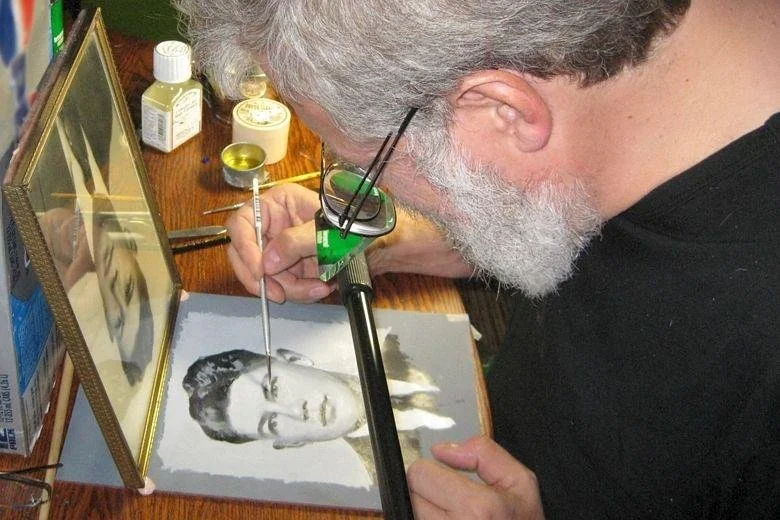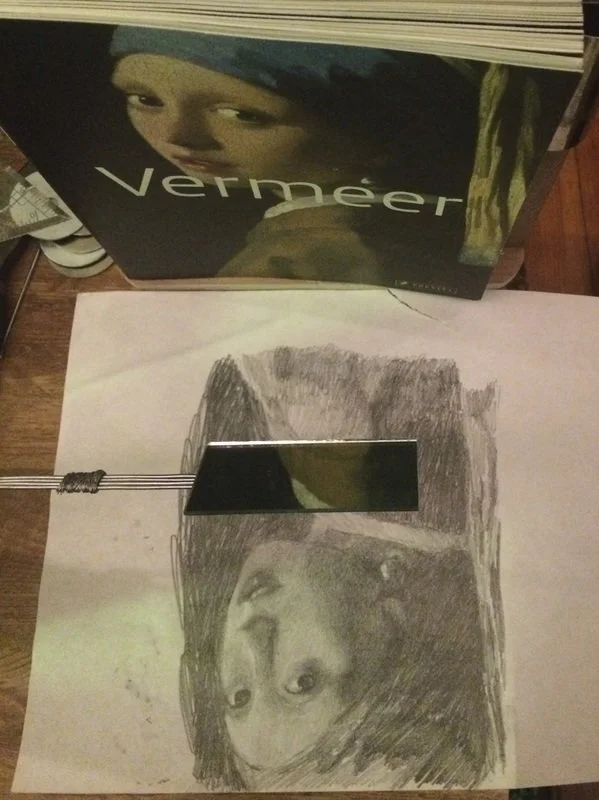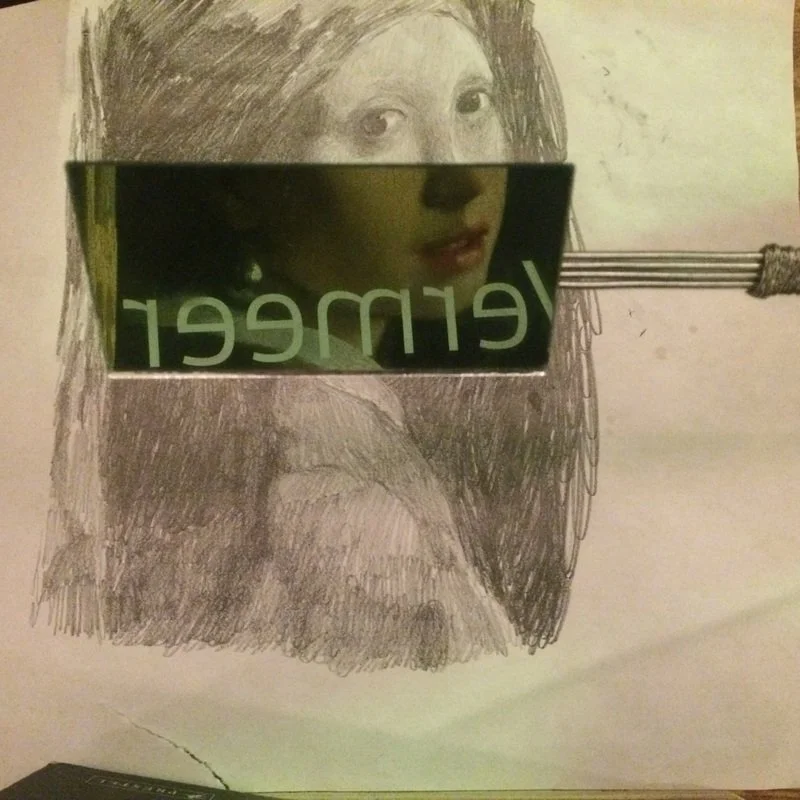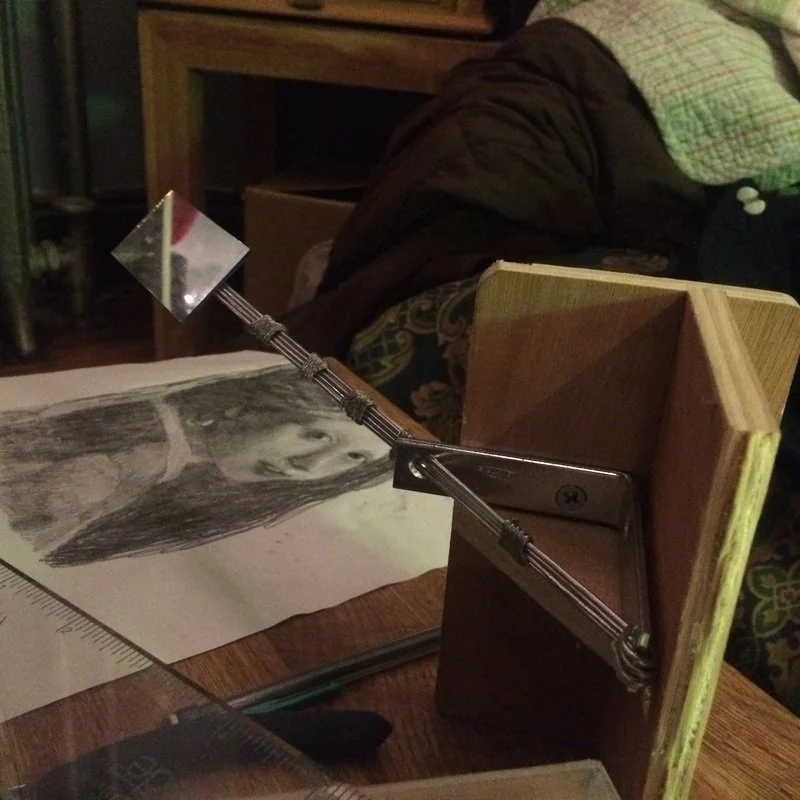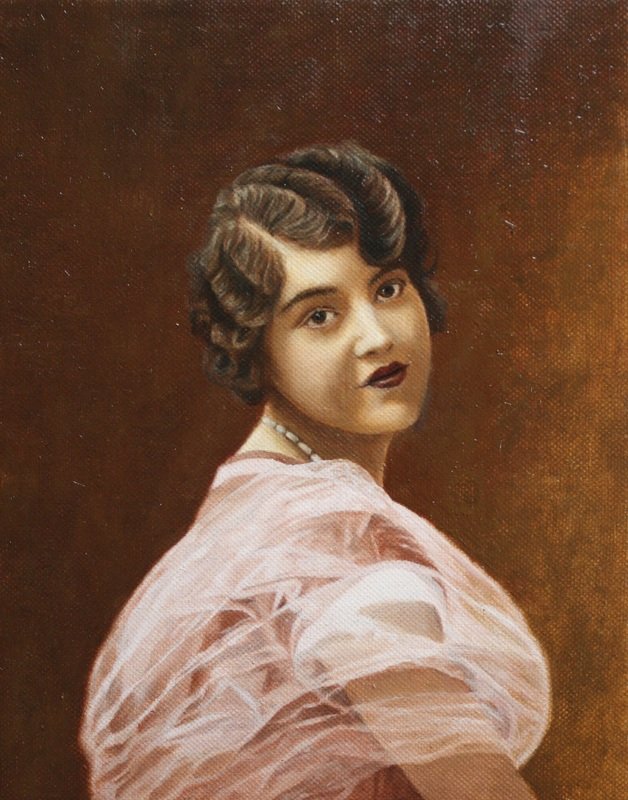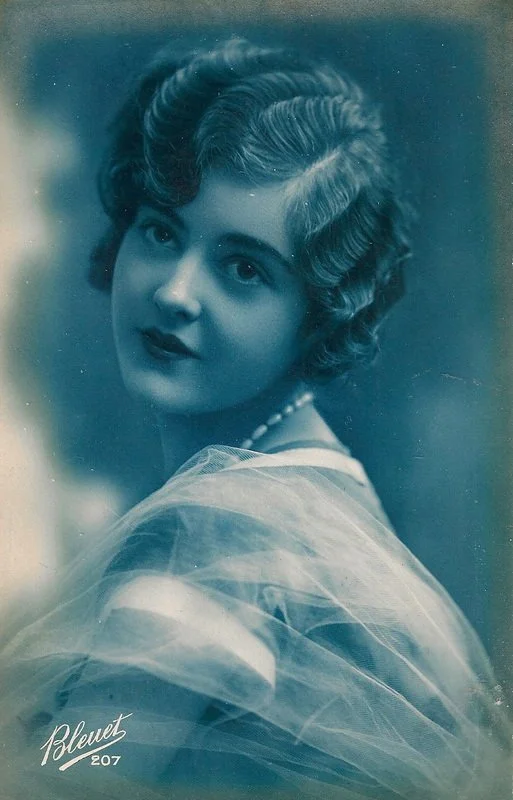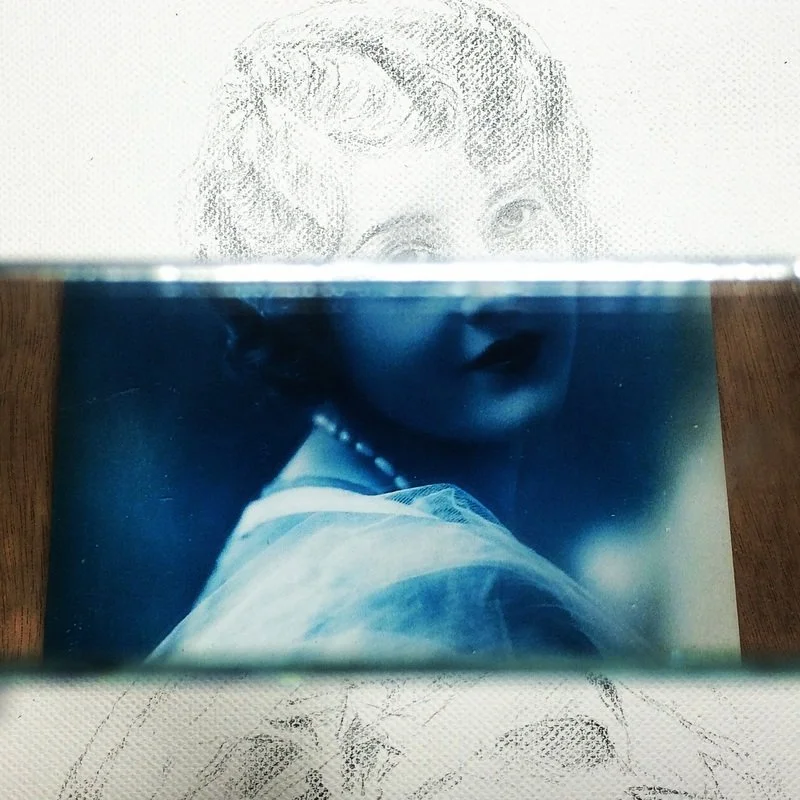Tim Jenison's mirror technique and the NeoLucida
Almost two years ago, I got a beat on the documentary Tim's Vermeer, in which inventor and engineer Tim Jenison ventures to recreate a Vermeer masterpiece with a method he proposes Vermeer himself may have used. To do this, he first manufactures a device that resembles the camera lucida, a 19th century drawing tool that superimposes the subject being observed by the artist onto the drawing or painting surface. In this way, both the subject and drawing are viewed simultaneously, and the drawing process feels more like tracing.
Tim Jenison experimenting with mirror tool. Image source: news.com.au
Jenison then came up with a complex system of mirrors and lenses to be combined with the camera lucida, which he then applied practically by building an exact replica of the Music Lesson room. With almost zero painting experience, the technique allowed him to recreate the painting almost exactly, capturing even the finest details, such as on the embellished harpsichord and the individual stitches of the draped Persian rug.
The possibility of copying from real life without the need for sight lines or a camera or grid lines is quite inspiring, and the documentary brought out my inner painting nerd. When I went home that night, I immediately built my own mirror tool and set out to try reproducing the camera lucida device demonstrated by Jenison. I used a small mirror from a makeup compact, wire, and a wooden base. I was building it from memory and so there was a lot of trial and error. But after some finagling, I came up with a stable device and tested it out by copying the cover of a Vermeer book, featuring "Girl with a Pearl Earring". It took a few minutes to adjust to this new way of seeing, using a reflection as a drawing map, but after a certain point, it clicked. The effect felt revolutionary. It would have taken me hours to reproduce that drawing with gridlines, or just observationally there would have been a lot of erasing and correcting. But the drawing took me only 45 minutes and it just came into being as naturally as though I were developing a photo.
That week, I was still itching to buckle down on my own experimentation and sat down to do some internet research on any other attempts to replicate Jenison's discoveries. But strangely, there seemed to be a complete absence of investigations of the technique online. So instead, I went to see the documentary again, this time equipped with a sketchbook in which I jotted down notes and drew some diagrams of Jenison's setup throughout his process.
As the credits rolled, I was struck by how this documentary was receiving mixed reviews. Across the aisle, a group of women entered a lively discussion on whether the documentary was a hoax, and how a man without any painting experience could possibly produce something so grand. One or two called into question the legitimacy of the entire system, and said they would like for someone with artistic experience to replicate it. Perhaps I was taking these comments too personally after having obsessed over the possibilities that could spring from Jenison's exploration, but I spoke up and told the women I had tried the technique and can confirm that it works perfectly well, and I am seriously considering incorporating it into my own paintings. We exchanged our thoughts on the subject for several minutes with several other groups getting involved, until the theater attendant had to shoo us out to prepare for the next showing. Who would have thought that an earnest artistic endeavor could polarize people so strongly!
A couple years since the documentary's release, there are now a few blog posts here and there with assorted attempts at the technique. Some are successful, others dismiss the whole thing as a Penn and Teller hoax. But quite contrary to this viewpoint, I am convinced that Jenison's technique is brilliant and potentially groundbreaking in observational drawing and painting. I can back this up with hard evidence from my experiments, culminating in a complete oil portrait produced entirely with the Jenison method. I have not had quite the budget, time, or resources to reproduce Jenison's full set up with a large lens and back mirror, which may be used to paint an entire space rather than a small image propped on a vertical plain, but my initial sucess with the first step leaves no doubt in my mind that it is entirely possible.
Along the same lines of Tim Jenison's creation, a company recently released a product called the Neolucita, or "The 21st Century Camera Lucida". It is an updated version of the camera lucida that allows an efficient superimposing of a contained subject onto the drawing or painting surface. I have been craving a chance to try one out, though always seem to check when it is out of stock. However, I've just placed an order and am expecting it shortly. Stay tuned for an update!
Detail of how to use NeoLucida. Image source: NeoLucida.com
